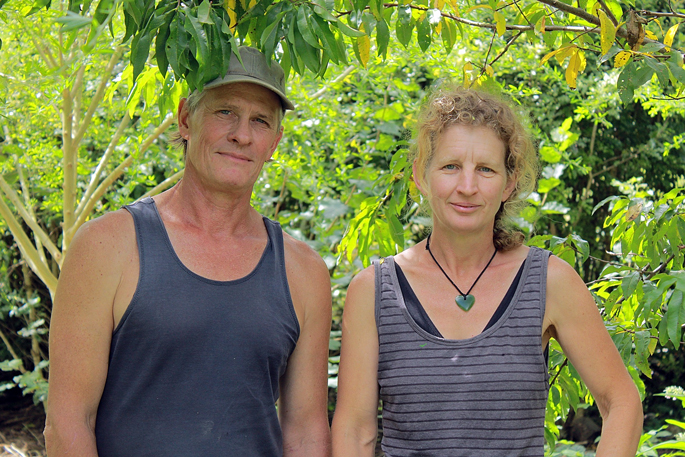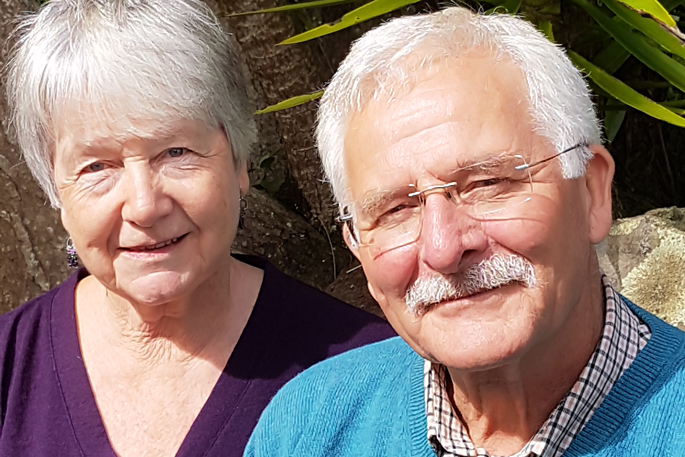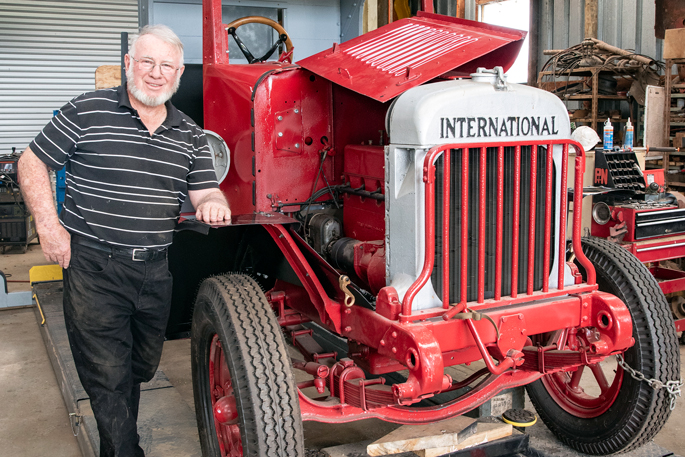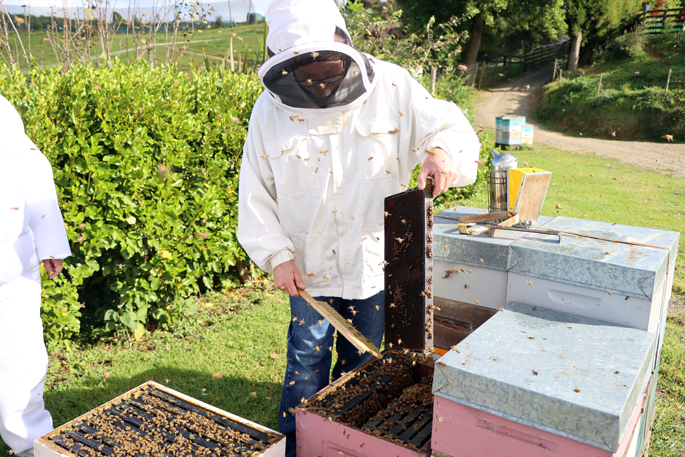Rebecca and David Stewart have put their hearts and souls into creating an off-grid lifestyle for their family in a remote valley in the central North Island.
They are four years into their journey of regenerating the property and managing their soil and livestock to enable them to live seasonally from their land.
Both were born into rural families, met while working in town and later owned a green grocers.
“We became interested in healthy eating and the concept of using food to nourish and heal the body,” says Rebecca. “David became very sick with a digestive issue, he needed to break his sugar addiction and found changing to a low carb diet, high in meat helped.
“Our first daughter is severely intellectually disabled and needed us both around, full-time, as I was incredibly sleep deprived and exhausted. We needed more land to continue living in a more basic, self-sufficient way on a low income.”
A fresh start
After taking the time to sell their two acres on five titles as three properties, the couple were able to buy a 6.2 hectare block in a remote Ruapehu valley.
“Remote was what we wanted. It had a creek and a gravity fed spring for water, beautiful trees, a 1920s bungalow that we loved, and it was already off-grid. We’ve added more solar panels and have a petrol generator as back up.”
Four hectares of pine on the property wasn’t so favourably viewed but was harvested early in the piece. David worked hard clearing and refencing, and three years on the land is back to pasture.
 The 1920s off-grid homestead. Photo: Summer Stewart.
The 1920s off-grid homestead. Photo: Summer Stewart.
“Our soil is a work in progress. We get high rainfall and lots of leaching. There’s also a layer of hard packed volcanic material about 30 centimetres down that roots need to break through to the fertile volcanic soil below.”
The regenerating pine land has been re-grassed mainly by feeding out locally sourced hay and having the animals trample it in with some beneficial seeds added. It's a diverse mix including clover, plantain, chicory and lotus.
Lotus and much of the tree fodder they use is high in tannin, and combined with culling known worm carriers, has removed the need for drenching stock.
“We manually remove weeds using a weed eater before they flower and seed. We get willow weed, foxgloves, blackberry, thistle, inkweed, ferns and dock on the ex-pine block.”
Self-sufficiency
The couple have planted many young fruit trees in addition to the ones already there, added berry bushes and have extensive veggie gardens.
Rebecca has experimented with preserving and pickling and other ways to store food for longer periods. Nothing is wasted with the animals also getting fruit and veggies in their diet.
“We follow natural farming practices and use homemade compost, vermicasts from our worm farm, comfrey, seaweed and a fermented brew of manure, grass and water.
“We use lime if required, woodchips from our trees and sawdust from milling happening in our valley. Our stock have salt licks which adds minerals into our soil via their manure.”
Rotational planting of crops like lupins to fix nitrogen or mustard to cleanse soil that has had diseased plants all helps with soil health.
While their low carb diets made great improvements to their health issues, it produced great challenges in the kitchen.
“Having been raised on good old farm style cooking, it takes a huge effort to leave most of that behind and walk another food path.”
A recent shift to a carnivorish diet has made further improvements to both their health and waistlines, but they missed vegetables and have added selective seasonal ones back into their diets, along with some fruit.
Managing livestock
The property currently supports four breeding ewes, their lambs and a ram, two beef cattle, two kunekune sows, their piglets and a boar, Indian game birds for eating, and chickens.
“We have a dairy cow that we’re hoping to milk again once she’s had her calf.”
 Kunekune pigs are bred for meat. Photo: Summer Stewart.
Kunekune pigs are bred for meat. Photo: Summer Stewart.
The Stewarts only raise what they need to sustain them. David kills and butchers the lambs, pigs and chickens himself, but the cattle are professionally shot, skinned and gutted and returned to the family as a carcass which David butchers.
Mindful that “you are what you eat”, thought is put into the animals’ diet, including fodder trees for browsing and cutting tree hay. Tree lucerne on the property makes nutritious tree hay. Mahoe trees bring up precious selenium from the soil and the livestock love it.
David and Rebecca’s dedication to their lifestyle and their willingness to adapt and keep going when things don’t quite go to plan, is documented in free blogs on their website.
Information on their experiences and methods can also be found on their Facebook and Instagram pages.
Rebecca has written three books with a fourth coming out in 2024.







0 Comments
Leave a Comment